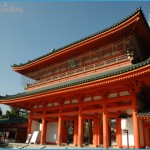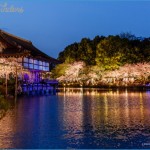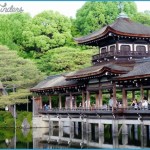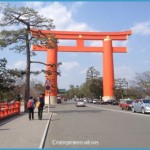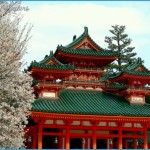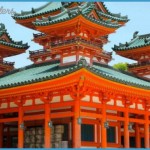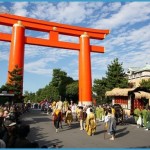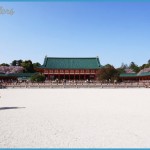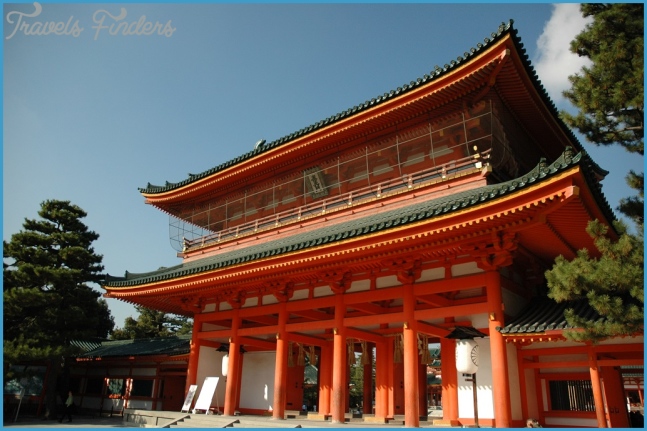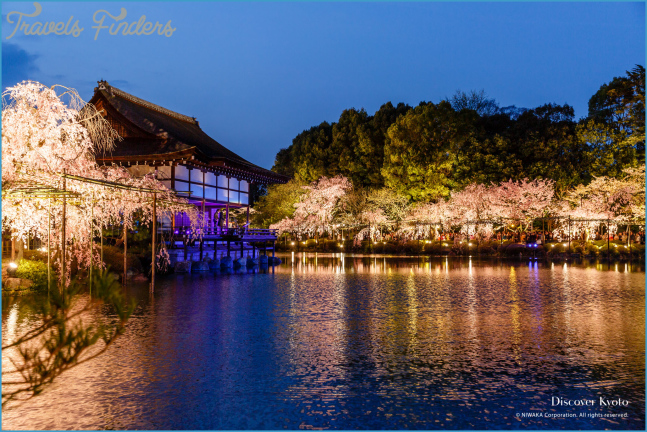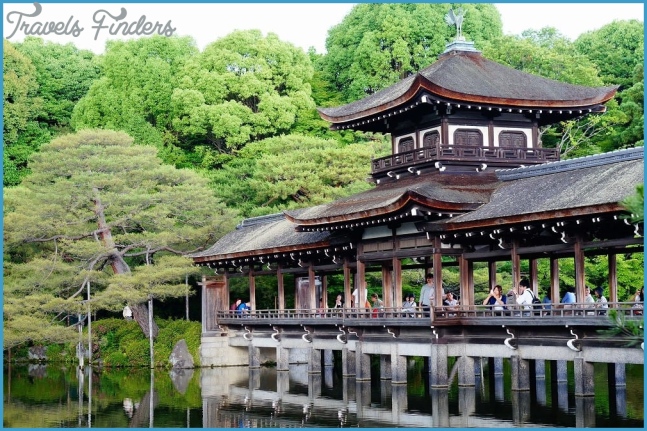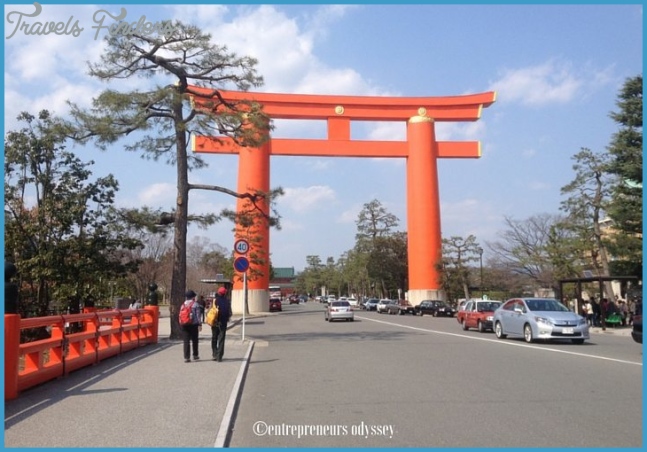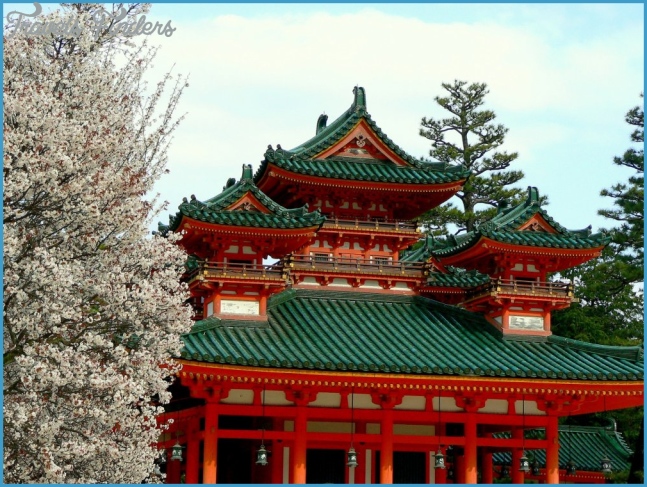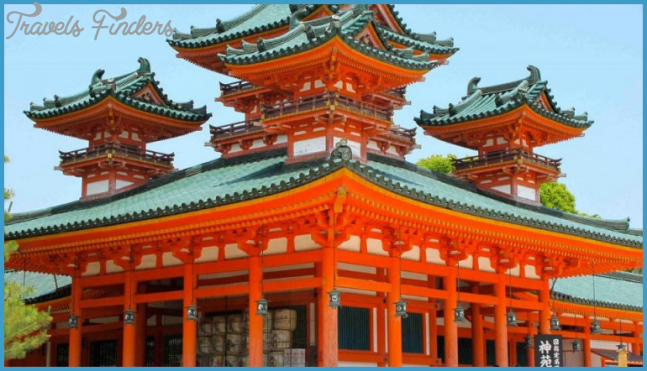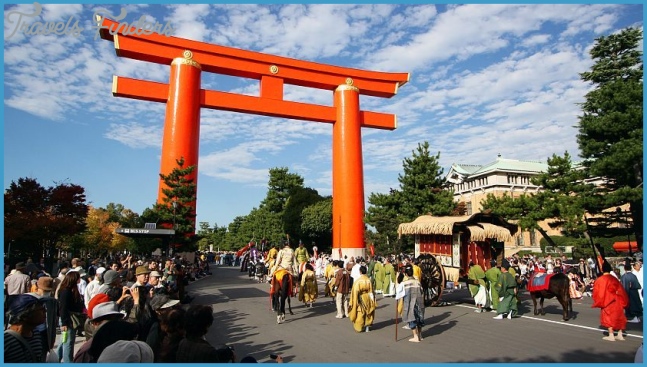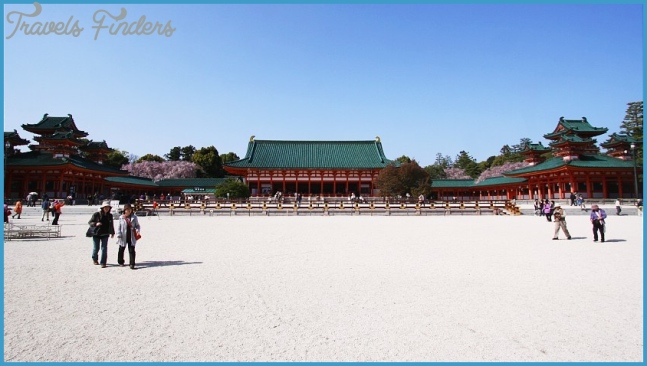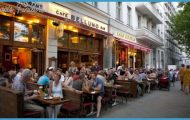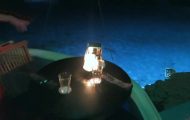Heian Jingu Shrine is a conscious reflection of Kyoto’s imperial legacy, built in 1895 to belatedly celebrate the city’s initiation of imperial capitalhood. Constructed in the style of the Imperial Palace of the Heian Period (794-1185), Heian Jingu is dedicated to the first emperor, Kanmu, and to the last, Komei, to rule the country from Kyoto. The sacred shrine’s towering vermilion torii gate is one of Japan’s largest Shinto gates and is a revered Kyoto landmark.
Heian Jingu Shrine in Kyoto Photo Gallery
The extensive gardens of Heian Jingu wrap around the outer shrine in classic strolling layout, created by Ogawa Jihei VII, the seventh generation of a distinguished Kyoto family of landscape architects, who labored on the shrine’s gardens for twenty years. Author Judith Clancy admiringly suggests that Heian Jingu’s gardens “might possibly be the most inviting place on earth in April when its hanging cherry trees envelop one’s passage under their graceful blossom filled limbs.” Certainly, the shrine gardens offer potential haiku material every day of every season. The kind woman tending the quiet tea pavilion by the “lying dragon” stepping-stone bridge, its somewhat precarious steps made of old cylindrical bridge pillars, says she has never actually seen anyone fall into the garden pond there, but has clearly heard the big splash when someone does occasionally slip off the dragon’s back.
A vast sand courtyard leads to the Daigokuden, Heian Jingu’s Great Audience Hall.
Otenmon is the shrine’s Divine Gate.
A miko shrine maiden and a traditional cloister.
The Soryu-ro “Blue Dragon Tower.”
The wooden corridor bridge at Seiho-ike Pond in the Heian Jingu Garden.
Water lilies in the Nishi Shin-en Garden, designed by 19th-century landscape architect Ogawa Jihei VII.

